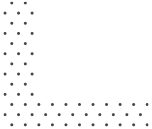How inspired are your students to engage in future sustainability action?
How effective were the components of this kit?
Please provide 2+ examples of student voice on the kit's impact on them
I was disappointed in how much rubbish we collected especially around the skate park which is mostly used by kids. They should care more about the animals in the ocean who may end up eating it. Alice, 6. We all did a great effort and I am proud that we played our part to save the environment especially by stopping that rubbish ending up in the ocean. Addison, 7.
Which kit components were the most impactful and why?
I thought the posters were very powerful. The gloves and bags were great.
How many bags of rubbish did your class collect?
How has this kit impacted your class culture toward whenua ora (land wellness) and sustainability?
I think it will continue to reinforce our school values and the Christian aspect of caring for our God given environment.
What is the legacy this kit will leave behind on your learners?
I think it will be huge and they will continue to pick up rubbish and spread the message.
How high was student engagement throughout this kit?
What was the latitude and longitude of your clean up? (from Sea Cleaners poster)
not sure
What was your cleanup location type?
Reserve, River
Which of the following types did your class collect?
Plastic Bag, Plastic Bottles, Plastic Cups, Food Wrappers, Straws, Tyres, Household Waste, Tin Cans, Toys
What was the most interesting piece of rubbish found and why?
old coal shovel, half a bike rim, goggles, fishing hooks, wire netting

